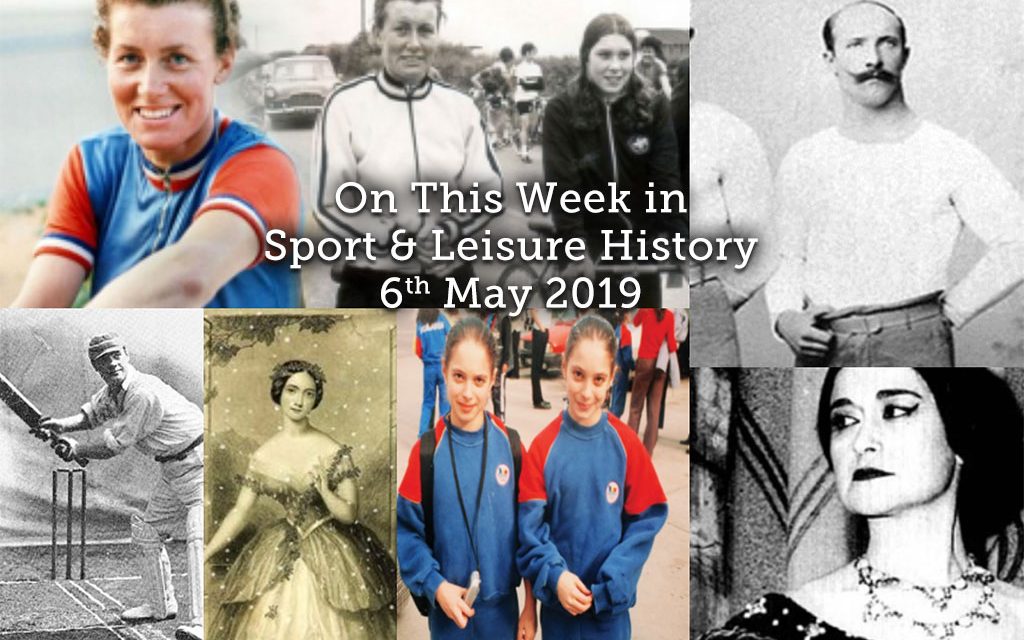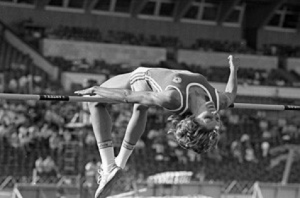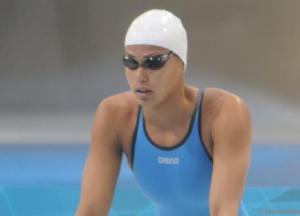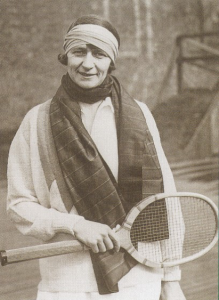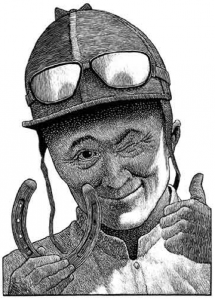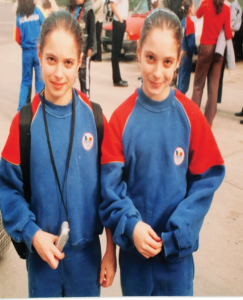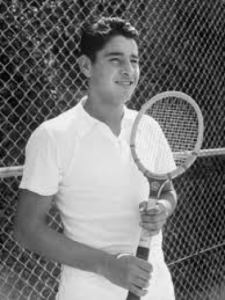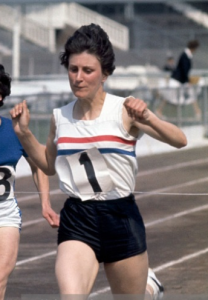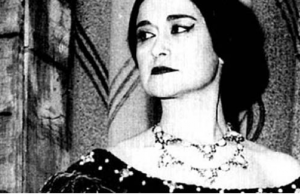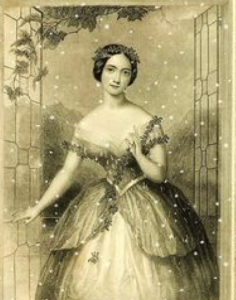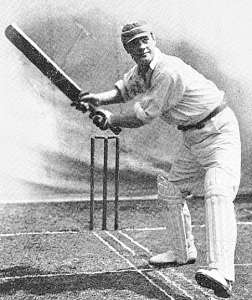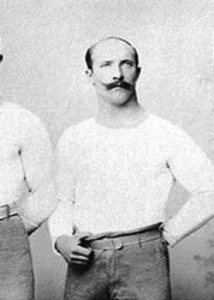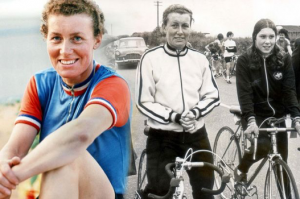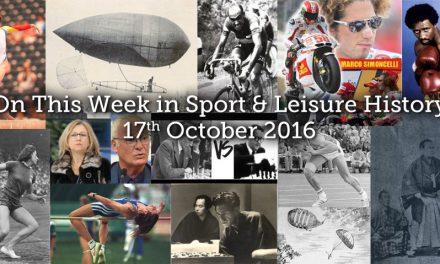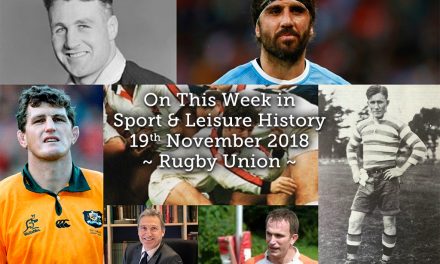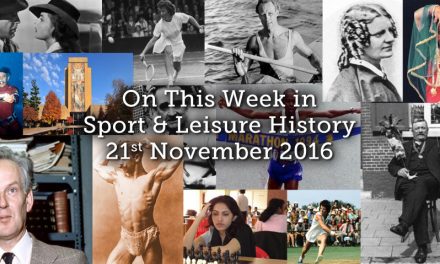6th
- America’s best known horse race, the Kentucky Derby, was first run in 1875. The event is traditionally run over 1.25 miles (2km) at Churchill Downs, Louisville, Kentucky, on the first Saturday in April. The inaugural winner was Aristides, ridden by Oliver Lewis.
- Today in 1889 The Eiffel Tower is officially opened to the public at the Universal Exposition in Paris.
- The first 4-minute mile was run today in 1954 by 25-year-old British medical student Roger Bannister. His time of 3mins 59.4 seconds was achieved at the Iffley Road track in Oxford and watched by about 3,000 spectators. Bannister, once president of the Oxford club, was running for the Amateur Athletic Association against his old university during their annual match. The race was carefully planned and he was aided by two pacemakers, Chris Brasher and Chris Chataway. Brasher took the lead as the first pacemaker, Bannister slotted in behind, with Chataway in third place. When Brasher began to feel the strain, Bannister signalled for Chataway to take over. Just over 200yds from the finish, Bannister took the lead with a final burst of energy. He sprinted to the line in record time and fell exhausted into the arms of a friend, the Rev Nicholas Stacey. Pandemonium broke out when spectators heard news that Bannister had officially beaten the four-minute mile. He had prepared for the race the previous week at Paddington Green in London in high winds. The weather at Iffley Road was not ideal for record-breaking – a 15mph crosswind with gusts of up to 25mph meant that Bannister nearly called off the attempt. Bannister beat his main rival to the record – Australian athlete John Landy. Both had run quite close to the time but the magic number four had proved elusive until now.
- Lyudmila Andonova, Bulgarian high jumper was born in 1960. She set the women’s world record in the high jump on July 20, 1984 in East Berlin, clearing 2.07m. In 1985 she was suspended for amphetamine doping. Andonova competed at the 1988 Olympics in Seoul, finishing in fifth place with 1.93m alongside Romania’s Galina Astafei. She is married to Bulgarian decathlete Atanas Andonov.
- Soviet decathlete Oleksandr Apaychev was born today in 1961, his personal best of 8709 points is the current Ukrainian record and ranks 16th on the world all-time list. He was second at the 1986 Goodwill Games and competed in the 1988 Summer Olympics, but failed to finish due to a leg infection. In 2009 he was named as head coach of Ukraine’s national athletics team.
- Daniela Bártová-Břečková, Czech athlete was born in 1974 in Ostrava. Originally a gymnast, her coach persuaded her to be a pole vaulter. She set nine world records in the mid-1990s, but she lost it on 4 November 1995 to Sun Caiyun and was unable to recapture it. Her personal best is 4.51m was set in Bratislava on the 9 June 1998. Despite her success she only won one international medal, silver at the 1998 European Indoor Championships. As a gymnast, she represented the Czech Republic at the 1991 World Artistic Gymnastics Championships, coming 33rd in the all-around event; she also took part in the all-around team event at the 1992 Summer Olympics. She is married to flatwater canoer Jan Břečka.
- Dominika Navara Cibulková, Slovak tennis player, was born in 1989, currently ranked world No. 4 by the Women’s Tennis Association. Known for her quick and aggressive style of play, she has won eight WTA singles titles and two on the International Tennis Federation tour. Cibulková has reached the quarterfinals or better of all four Grand Slam tournaments. One of the most notable achievements of her career to date was a finals appearance at the 2014 Australian Open, when she became the first female Slovak to reach the championship round of a Grand Slam. She also won the WTA Finals in 2016, becoming the fourth player (after Serena Williams in 2001, Maria Sharapova in 2004 and Petra Kvitová in 2011) to win the tournament on debut.
- Saint Lucian swimmer Danielle Beaubrun was born in 1990. In 2006, Beaubrun represented Saint Lucia in the Commonwealth Games where she reached the 100m breaststroke semi-finals.In the 2007 she was the only Saint Lucian swimmer to make qualifying times for the Pan American Games 2, where she set a new St.Lucian Record for 100m breaststroke. She swam for Saint Lucia at the 2008 Olympic Games, where she was the youngest member of the country’s Olympic team.
- Today in 1994 the Queen and France’s President Francois Mitterrand formally opened the Channel Tunnel during two elaborate ceremonies in France and Britain. After travelling through the tunnel, which took eight years and billions of pounds to build, the Queen said it was one of the world’s great technological achievements. The tunnel is the first land link between Britain and Europe since the last Ice Age about 8,000 years ago. The first leg of the Queen’s journey took her from London’s Waterloo station through the tunnel by high-speed Eurostar passenger train. She arrived at Calais at the same time as the President Mitterrand’s train which had travelled from Paris’ Gard du Nord via Lille. The two locomotives met nose to nose – a computer that prevents two trains travelling on the same track was switched off for the occasion. The two heads of state cut red, white and blue ribbons simultaneously to the sound of their respective national anthems played by the band of the French Republican Guard. They were accompanied by their Prime Ministers John Major and Edouard Balladur and other government ministers to the Eurotunnel terminus. Eurostar would not start carrying passengers until July at the earliest and private cars would have to wait until October. After lunch, the Queen and President Mitterrand took the royal Rolls-Royce on Le Shuttle for the 35-minute trip to Folkestone. There was a similar ribbon-cutting ceremony on English soil. Among those present were joint Eurotunnel chairmen Sir Alastair Morton and André Bénard as well as Frenchman Philippe Cozette, who drilled the hole that first joined the two ends of the tunnel in December 1990.
- American professional boxer Jimmy Ellis died on this day in 2014 aged 74. He mainly competed from 1961 to 1975 and won the vacant WBA heavyweight title in 1968 by defeating Jerry Quarry, making one successful title defence in the same year against Floyd Patterson, before losing to Joe Frazier in 1970.
- Patrick Ekeng was born today in 2016. A Cameroonian professional footballer who had two international caps for his country’s national team, whom he represented at the 2015 Africa Cup of Nations.After starting at Canon Yaoundé and spending time on the fringes of France’s Le Mans, he had brief spells in Switzerland, Spain, and Romania, where he died after collapsing in a match for Dinamo București.
- Lyudmila Andonova
- Danielle Beaubrun
7th
- On this day in 1824 saw the World premiere of Ludwig van Beethoven’s Ninth Symphony in Vienna. The performance was conducted by Michael Umlauf under the composer’s supervision.
- In 1846 The Cambridge Chronicle, America’s oldest surviving weekly newspaper is published for the first time in Cambridge, Massachusetts.
- British tennis and badminton player Kathleen “Kitty” McKane Godfree was born today in 1896. According to A. Wallis Myers of The Daily Telegraph and the Daily Mail, Godfree was ranked in the world top ten from 1921 (when the rankings began) through to 1927, reaching a career high of World No. 2 in those rankings in 1923, 1924, and 1926. Godfree won five Olympic medals in tennis at the 1920 Antwerp and 1924 Paris games, the most Olympic medals ever won by a tennis player until Venus Williams matched this record at the 2016 Olympics Games. In 1923 she captured the title at the World Covered Court Championships. Godfree won the Wimbledon singles title twice. In the 1924 final, she recovered from a set and 4–1 (40–15) down against Helen Wills Moody to win the title. In the 1926 final, Godfree came back from a 3–1 and game-point-against in the third set to defeat Lili de Alvarez. The 1924 Wimbledon final was not Godfree’s only victory over Moody, during the 1924 Wightman Cup she won 6–2, 6–2. In 1925, Godfree became the first person to have reached the singles finals of the French Championships, Wimbledon, and U.S. Championships during her career.In 1922, Kitty and her sister Margaret McKane Stocks were the only sisters to contest a Wimbledon doubles final (until Serena and Venus Williams reached the final in 2000), losing to Suzanne Lenglen and Elizabeth Ryan 6–0, 6–4. Godfree’s lifetime record at Wimbledon was 38–11 in singles, 33–12 in women’s doubles, and 40–12 in mixed doubles. She received a Centenary medallion on Wimbledon’s Centre Court in 1977 and presented the winner’s trophy to Martina Navratilova in 1986, in honour of the centenary year of play at Wimbledon; she was inducted into the International Tennis Hall of Fame in 1978. In badminton, Godfree won eight All England Open Badminton Championships from 1920 to 1925, considered the unofficial World Badminton Championships until 1977. She was the subject of This Is Your Life in 1988 when she was surprised by Eamonn Andrews. She died in 1962 aged 96.
- Jimmy Ball the Canadian Olympic sprinter was born in 1903. He competed at the 1928 and 1932 Olympics, winning bronze in the 4×400m relay at both Games. Individually, he finished second in the 400m in 1928 and was eliminated in the heats in 1932. At the 1930 Empire Games he won a silver medal with the Canadian team in the 4×440yds relay. He also finished fifth in the 220yds and 440yds.
- Scottish and East African rugby football player William Brewitt (WB) Young was born in Ardrossan in1916. He was capped ten times for Scotland between 1937 and 1948 and three times for East Africa between 1949 and 1950. Along with Maurice Daly of Ireland he is one of only two people to have been capped by a major rugby playing nation and by East Africa.Along with W C W Murdoch, he was one of only two Scottish players to be capped on either side of World War II, giving him one of the longest international careers on record. John “Jack” Heatonand Thomas Arthur “Tommy” Kempalso achieved this feat for England.
- Born in 1921, Gaston Rébuffat a well-known French alpinist and mountain guide. The climbing technique, to gaston, was named after him. Rébuffat began climbing in the Calanques becoming a mountain guide in 1942. He rose to international prominence in 1950 as one of the four principals of a French expedition during the first ascent of Annapurna, the highest peak then summitted. His most famous mountaineering feat was to be the first man to climb all six of the great north faces of the Alps—the Grandes Jorasses, the Piz Badile, the Petit Dru, the Matterhorn, the Cima Grande di Lavaredo, and the Eiger. His insistence on seeing a climb as an act of harmonious communion with the mountain, not a battle waged against it, seemed radical at the time, though Rébuffat’s aesthetic has since won the day. He put up more than 40 new routes in the Alps. A photo of him climbing in the French Alps is one of 116 pictures included as part of the Golden Record on the Voyager Spacecraft. A long-time Honorary Member of the American Alpine Club and Officer of the French Legion of Honour, he died of cancer in Paris in 1985 aged 64.
- Today in 1951 the IOC officially allowed Russia to participate in the 1952 Olympics.
- Florenţa Crăciunescu, later Ionescu, and then Ţacu, was born in 1955, she was a Romanian athlete, who won discus bronze at the 1984 Olympics and finished sixth in 1980. In 1984 she was eighth in the shot put. Her elder sister Carmen Ionesco competed in the same events for Canada at the 1984 Olympics.
- Florian Schwarthoff, the German sprint hurdler, was born in 1968. He is best known for winning bronze at the 1996 Olympics. Schwarthoff had his best season in 1995 when he set a new German record of 13.05s. He was expected to compete for a silver or bronze medal at the World Championships in Gothenburg behind the overwhelming favourite Allen Johnson from the United States. However, Schwarthoff did not finish the semi-final as he fell over a hurdle. Schwarthoff remained for several years a world class hurdler but never won a gold medal.
- Severiano “Seve” Ballesteros Sota died of brain cancer today in 2011 at the age of 54. A Spanish professional golfer and World No. 1 who was one of the sport’s leading figures from the mid-1970s to the mid-1990s, he came from a gifted golfing family and won more than 90 international tournaments in his career, including five major championships between 1979 and 1988: The Open Championship three times, and the Masters Tournament twice. He gained attention in the golfing world in 1976, when at the age of 19 he finished second at The Open. He played a leading role in the re-emergence of European golf, helping the European Ryder Cup team to five wins both as a player and captain. He won the World Match Play Championship a record-tying five times. He is generally regarded as the greatest Continental European golfer of all time. Ballesteros won a record 50 European Tour titles, winning at least one European Tour title for 17 consecutive years between 1976 and 1992. His final victory was at the 1995 Peugeot Spanish Open. Largely because of back-related injuries, Ballesteros struggled with form during the late 1990s. Despite this, he continued to be involved in golf, creating the Seve Trophy and running a golf course design business. Ballesteros eventually retired from competitive golf in 2007 because of continued poor form. In 2008 he was diagnosed with a malignant brain tumour. Ballesteros was awarded the Lifetime Achievement Award for the second time at the BBC Sports Personality Awards 2009. He was presented with the award at his home in Spain by his compatriot and former Ryder Cup team-mate José María Olazábal.
- Kathleen Kitty McKane Godfree
- Gaston Rébuffat
8th
- Yorkshire completed a record innings in the county cricket championship when they made 887 against Warwickshire at Edgbaston in 1896.
- The Surrey and England batsman Jack Hobbs completed his 100th first-class century on this day in 1923.
- On this day in 1927, while attempting to make the first non-stop transatlantic flight from Paris to New York, French war heroes Charles Nungesser and François Coli disappeared after taking off aboard The White Bird biplane.
- Former world heavyweight boxing champion Sonny Liston was born in 1932. He beat Floyd Patterson to take the title with a first-round knockout in 1962. He retained the title a year later, again by beating Patterson in one round, but met his match in newcomer Cassius Clay in 1964. He suffered a first-round knockout by Clay (then Muhammad Ali) when trying to regain the title the following year. Liston died in 1970.
- In 1936 Jockey Ralph Neves was thrown from his horse during a race and declared dead on the scene. Neves was in first place in a close race for the riding title at Bay Meadows (a track in San Mateo) with a few other jockeys. The prize was $500 and a gold watch awarded by Bing Crosby, so Neves naturally had quite the incentive to win. Neves was in fifth place behind four horses who were bunched together. The outside horse broke its leg, sending it into the other three horses, causing them all to begin to fall. This startled Neves’ horse, Flanakins, who threw Neves into a wooden rail. Neves was then trampled. His seemingly lifeless body was taken to hospital on the back of a pick-up truck (no track-side ambulances in those days), the announcer told the crowd, “We regret to inform you that jockey Ralph Neves is dead. Please stand in silent prayer.” What actually happened next is the cause of much debate, Neves, naturally, was completely out of it, so he didn’t know himself what happened exactly. A doctor, at some point, gave him a shot of adrenaline., the debate is whether that was administered at the hospital or if Neves had already been transferred to a local mortuary (toe tag and all) before a doctor acquaintance of Neves gave him the injection. However it was the adrenalin that revived or, if you prefer, resurrected Neves. He then tried to get back to the racetrack to compete in the final race of the day. The track administrators would not allow it and according to the accounts his wife fainted when she saw him return to the track. The next day Neves competed in five races. For years, even the National Racing Hall of Fame incorrectly noted that the jockey WON all five of these races, this is untrue (and the Hall of Fame has since corrected it). He did not win ANY of his races the following day. However, he did have enough second and third place finishes to ensure that he won the overall riding title, netting him the $500 and the gold watch. The San Francisco Chronicle’s take on it was “Ralph Neves – Died But Lives, to Ride and Win.”
- Today in 1973 Ernie Banks filled in for Cubs manager Whitey Lockman who was ejected during the game, thereby technically becoming baseballs first African American manager.
- Today in 1984, twelve weeks before the opening ceremony of the Los Angeles Olympic Games, the USSR announced it would be boycotting them. It was expected at the time that most of the Eastern Bloc will follow suit. The announcement, made on Russian TV, blamed the commercialisation of the games and a lack of security measures, which amounted to a violation of the Olympic charter. The Soviet Union accused the USA of using the games “for political purposes” and “stirring up anti-Soviet propaganda” and of having a “cavalier attitude to security of Russian athletes”. It was thought that the Russian withdrawal would devalue the Los Angeles Games far more than the earlier US boycott in 1980 as it seemed certain that top-class athletes from the Eastern Bloc would also be prevented from taking part. The White House denounced the move calling it a “blatant political act”. John Hughes, a State Department spokesman, said the USA had “gone the extra mile” to ensure adequate security measures were in place. He further took the opportunity to attack the USSR for its “barbarous behaviour” in Afghanistan and its persecution of Russian dissidents such as Dr Andrei Sakharov living in forced exile in the Russian town of Gorky. Moscow had not, at this point officially told the IOC of its boycott but there was little hope that the decision will be reversed. In the end, with the exception of Romania, the entire Eastern bloc and Cuba joined the boycott, amounting to 14 countries in all. Although a record 140 nations did ultimately take part – including China which had not taken part since 1932 – the level of competition was somewhat lopsided with the absence of so many world-class athletes. As a result the USA won a record 83 gold medals. The Los Angeles Summer Games were highly commercialised – they were the first privately financed games ever and made a profit of $225m thanks to corporate sponsorship and extensive use of unpaid volunteers. Forty-three companies were licensed to sell “official” Olympic products.
- In 1989 Paul McCartney released a remake of Ferry Cross the Mersey in aid of those affected by the Hillsborough disaster.
- Romanian gymnast twins Anamaria and Adriana Tămârjan were born today in 1991. Anamaria is a bronze Olympic medallist and a gold European medalist with the team. Individually, she is a European silver medallist on balance beam and a bronze medallist on floor. Adriana was also a world-class gymnast and a member of the Romanian national team, but she is now retired. Anamaria also struggled with health problems; she was not at her full physical potential at the 2009 European Championships. However, she managed to qualify second all around, second on beam and fifth on floor. She failed to win a medal in the all-around event due to a fall during the floor exercise. She was placed fifth all around, won silver on balance beam and placed fourth on floor. Later that year she competed at the 2009 World Championships where she qualified only in the all-around final. She ended her second world championships experience by coming ninth all around. After her return to Romania she underwent surgery to both knees with little chances of making a comeback at the 2010 European Championships. Due to health problems she retired in June 2010.
- Sir Alex Ferguson announced his retirement as Manchester United manager at the end of the season on this day in 2013.
- Nicholas Busick was an American professional wrestler and police officer, who was born on June 1st 1954, and died today in 2018, better known by his ring name Big Bully Busick. He is best known for his appearances with the World Wrestling Federation (WWF) in 1991, where he portrayed a stereotypical bully from the 1920s with a “turtleneck, bowler hatand king-sized cigar”. Busick is also known for his appearances with Georgia All-Star Wrestling (GAF) and the Global Wrestling Federation (GWF).
- Frank Neves
- Anamaria and Adriana Tămârjan
9th
- On this day in 1887 Buffalo Bill Cody’s Wild West Show opened in London.
- Joe Davis beat Tom Dennis 20-11 at Camkin’s Hall, Birmingham, in 1927 to win the first world professional snooker championship. Davis beat o field of ten to make the trophy, which is still presented today. His prize money that day? a mere 10s 6d (52½p!!)
- Ricardo Alonso González also known as Richard Gonzales, and usually as Pancho Gonzales, American tennis player, was born in 1928. He was the World No 1 tennis player for an all-time record eight years from 1952 to 1960. He won 14 Major singles titles, including 12 Pro Slams and 2 Grand Slams, but never won Wimbledon. Largely self-taught, Gonzales was a successful amateur player in the late 1940s, twice winning the United States Championships. He is still widely considered one of the greatest players in the history of the game. A 1999 Sports Illustrated article about the magazine’s 20 favourite athletes of the 20th century said about Gonzales (their number 15 pick): “If earth was on the line in a tennis match, the man you want serving to save humankind would be Ricardo Alonso Gonzalez.” The American tennis commentator Bud Collins echoed this in an August 2006 article for MSNBC.com: “If I had to choose someone to play for my life, it would be Pancho Gonzales.
- Canadian figure skater Barbara Ann Scott was also born today in 1928. She was the 1948 Olympic champion, a two-time World champion (1947–1948), and a four-time Canadian national champion (1944–46, 48) in ladies’ singles. Known as “Canada’s Sweetheart”, she is the only Canadian to have won the Olympic ladies’ singles gold medal, the first North American to have won three major titles in one year and the only Canadian to have won the European Championship (1947–48). During her forties she was rated among the top equestrians in North America. She received many honours and accolades, including being made an Officer of the Order of Canada in 1991 and a member of the Order of Ontario in 2008.
- The former British boxing world champion Terry Downes was born in 1936. He took the middleweight crown from the defending champion, Bostonian Paul Pender, in 1961 but lost it again, to the American, nine months later, his attempt to wrest the world light-heavyweight from Willie Pastrano was bought to a halt in the 11th round at Manchester in 1964.
- Don Bradman was bowled for 0 in a match against Cambridge University on this day in 1934. The wicket was described as true and easy as Bradman fell victim to J G W Davies, a slow leg-break bowler. At the lunch break Cambridge had dismissed three leading Australian batsmen for 80 runs. The Cambridge team included Jahangir Khan, who was one of the best all-rounders in the all-Indian team that toured England in 1932.
- Footballer Bernard Joy played his one and only game for England in 1936, against Belgium, a member of the successful Corinthian Casuals team, he was the last amateur to play for England at this level.
- Born today in 1941, Dorothy Hyman, English sprinter who competed at the 1960 and 1964 Olympics in the 100m, 200m and 4×100m and won a medal in each of them. She also won individual 100m gold and 200m silver at the 1962 European Championships in Belgrade and, representing England, completed the 100yd/220yd sprint double at the 1962 Commonwealth Games. Winner of the 1963 BBC Sports Personality of the Year award, she has a stadium in her home village in Cudworth, Barnsley, named in her honour. In 2011, she was inducted into the England Athletics Hall of Fame. She retired shortly after the 1964 Olympics and wrote an autobiography in 1965. This payment she received for the book prevented her from returning to amateur international competitions later in the 1960s, when she reconsidered her retirement. Instead she became an athletics coach at the Dorothy Hyman Track Club in her home town and occasionally competed at the national level. Later she worked in the administration of the National Coal Board and taught people with learning disabilities.
- Canadian swimmer Donald Smith was born in 1958, he won a silver medal in the men’s 4x100m medley relay at the 1976 Olympics in Montreal, Quebec. At the 1978 Commonwealth Games in Edmonton, Alberta, he became the first competitor to win six gold medals at a single Commonwealth Games; he won the 100m and 200m breaststroke, 200m and 400m individual medleys, and was part of the winning 4x100m freestyle and 4x100m medley relay teams. Smith twice broke the world record in the men’s 200m individual medley (long course). He also won a NCAA national swimming championship at the University of California, Berkeley and was inducted into the Alberta Sports Hall of Fame and Museum in 1978.
- Tegla Loroupe the Kenyan long-distance track and road runner was born in 1973. She is also a global spokeswoman for peace, women’s rights and education. Loroupe holds the world record for 20k, 25k and 30k and previously held the world marathon record. She is the three-time World Half-Marathon champion. Loroupe was also the first woman from Africa to win the New York City Marathon, which she won twice. She has won marathons in London, Boston, Rotterdam, Hong Kong, Berlin and Rome. In 2016, she was the person organising the Refugee Team for the 2016 Summer Olympics in Rio.
- At the age of 71, Tenzing Norgay, born Namgyal Wangdi and often referred to as Sherpa Tenzing died in 1986 He was a Nepali Sherpa mountaineer and among the most famous mountain climbers in history. He was the first individual known to reach the summit of Mount Everest, which he accomplished with Edmund Hillary on 29 May 1953. Time named him one of the 100 most influential people of the 20th century.
- Today in 2001 the so called Accra Sports Stadium Disaster took place. 129 Ghanian football fans died in a stampede caused by the firing of teargas by police following a decision by the referee in a crucial match between arch-rivals Accra Hearts of Oak and Kumasi Asante Kotoko.
- Wouter Weylandt, Beligan professional cyclist died on this day in 2011 aged just 26. He raced for UCI ProTeam Quick-Step–Davitamon and later for Leopard Trek. His first major win was the 17th stage of the 2008 Vuelta a España. He also won the 3rd stage of the 2010 Giro d’Italia. In stage 3 of the 2011 Giro d’Italia, Weylandt crashed while descending the Passo del Bocco, suffering a fatal injury. With some 17km of the stage remaining, riders were going downhill in the final part of the descent, Weylandt trailing the main peloton, going perhaps 80km/h (50mph). According to Manuel Antonio Cardoso (a Team RadioShack rider who was trailing Weylandt), Weylandt looked back over his left shoulder at other riders before a slight left bend. Weylandt lost control and hit the leading edge of a low concrete guard rail on the left side of the road with his foot and pedal. He was thrown to the right side of the road, where he hit another obstacle. The medical chief of staff of the Giro, Dr. Tredici, was right behind the accident in a service car and reported that he ran to Weylandt less than 20 seconds after the crash but, he said on Sky News, “…he was already and clearly dead upon impact. I had never seen such a thing before, such a sudden death.” Tredici also reported the severe trauma Weylandt’s contact with the wall had caused him: had Weylandt survived injuries to his left foot and lower leg would likely have necessitated their amputation. The Giro d’Italia medical team and Garmin’s team doctor performed resuscitation attempts for around 45 minutes while an emergency team was rushing to the incident by helicopter. On their arrival, Weylandt was declared dead due to facial and basal skull fractures, his injuries were too severe to allow further resuscitation attempts. It was determined that his heart had stopped immediately upon impact. An autopsy confirmed that the cyclist was “dead on the spot and did not suffer.” Weylandt was wearing a helmet, as all professional road cyclists have been obliged to do since May 2003 Weylandt is the fourth rider to die in the history of the Giro d’Italia. In tribute to Weylandt, the following day’s stage of the race was neutralized, with teams taking turns to ride in front, and all riders wearing black armbands.
- Pancho Gonzales
- Dorothy Hyman
10th
- In 1824 the National Gallery in London was first opened to the general public.
- Today in 1870 Jem Macedefended his heavyweight crown against Irish champion Joe Coburn, the bout lasted an hour and 17 minutes and during that time neither man is struck by a punch.
- On this day in 1886 the FA approved the giving of caps to players appearing in international matches. Contrary to popular belief, a cap is not awarded for every single international appearance. Players are awarded one cap for every match they play, including friendlies, unless they play in a World Cup or European Championship finals tournament. Then they are given a single cap for the competition, with the names of all their opponents stitched into the fabric of the cap itself. As an example, when David Beckham made his 100th appearance for England, because a number of his appearances had been at World Cup and European Championship final tournaments for which he received only one cap, he received only his 85th physical cap.
- Lothar Schmid, German chess grandmaster was born in Radebeul near Dresden in 1928. He was best known as the chief arbiter at several World Chess Championship matches, in particular the 1972 encounter between Bobby Fischer and Boris Spassky at Reykjavík. He was also an avid collector of chess books and paraphernalia. It was reputed that he owned the largest known private chess library in the world, as well as a renowned collection of chess art, chess boards and chess pieces from around the globe.
- At the 64th edition of the British Gold Open in 1929 Walter Hagen shot a 292 to win the title.
- Audun Boysen, Norwegian middle distance runner was born in 1929 He was a prominent 800m runner in the 1950s, and he won a bronze medal at the 1956 Olympics, a silver medal at the 1958 European Championships and another bronze at the 1954 European Championships. He set three world records over 1000m, the last being 2:19.0 in 1955. The same year he ran 800m in 1:45.9, setting a new Norwegian record. Incidentally, the man who beat him in that race, Belgian Roger Moens, ran a world record time, with Boysen also under the old world record. That Norwegian record stood for 37 years until 3 July 1992 when it was broken by Atle Douglas (1:45.15) and Vebjørn Rodal (1:45.33). Rodal becoming Olympic champion four years later. Boysen died on 2 March 2000 aged 79.
- Former Spanish amateur tennis champion Manolo Santana was born in 1938, he was ranked World No. 1 in 1966. Before winning Wimbledon he was quoted as saying “Grass is just for cows.” He thought that tennis should be played on artificial surfaces as opposed to lawn tennis courts like the ones at Wimbledon. Santana was born in Madrid, and began his career as a ball boy and “picked up” the game. In 1965, Santana led Spain to unexpected victory over the US in the Davis Cup, and he became a national hero. Despite his previous Grand Slam successes in the French Championships (1961, 1964) and the U.S. Championships (1965), Santana’s win at the 1966 Wimbledon championships was a surprise, where he defeated the sixth seed Dennis Ralston. This was his last Grand slam title. His last big tournament win was in 1970 when he defeated Rod Laver. He also captured the doubles title in Barcelona that year when he teamed with Lew Hoad to defeat Laver/Andrés Gimeno. At the 1968 Olympic Games in Mexico City, Santana won singles gold, though tennis was only a demonstration sport at that time. He later was captain of the Spanish Davis Cup team twice, once in the ’80s and again for four and a half years in the mid-’90s, until he was dismissed in 1999. Currently, he is the organizer of the Madrid Masters. He manages the Manolo Santana Racquets club, a tennis club in Marbella, and the Sport Center Manolo Santana, in Madrid. He appeared at the 2011 Wimbledon Championships in the Royal Box to watch the Men’s Final which was between his fellow countryman Rafael Nadal and Novak Djokovic.
- Former Olympic, World, Commonwealth and European triple jump champion Jonathan Edwards was born in 1966. He broke the World Record twice in the World Championships in 1995. On his first jump, he became the first man to legally pass the 18m barrier with a jump of 18.16 m (59 feet 7 inches). That record lasted for about 20 minutes. His second jump of 18.29 m made him the first to jump 60 feet. That record still stand some 22 years later.
- Born today in 1985, Jon Schofield, British canoeist who partnered with Liam Heath in the men’s kayak double 200m, they won bronze in K-2 200 at the 2012 Olympics, and silver at the 2016 Olympics in the same event. Schofield is a member of the Soar Valley Canoe Club and is coached by Alex Nikonorov.
- Ivana Španović, Serbian long jumper and reigning European Indoor and Outdoor champion was born in 1990. In 2013, she became the first Serbian track and field athlete to win a medal at the IAAF World Championships. She is the Serbian long jump record holder both indoors and outdoors, and also the national indoor record holder in the 60m and the pentathlon. In 2017, she had an impressive win at European indoor champion in Belgrade. During the qualification she achieved the best ever indoor mark in a qualification round with 7.03m. In the final she broke her national record twice, 7.16m (in the second round) and 7.24m (third round), she successfully defended her 2015 title and her new national record, 7.24m, put her as the third all-time indoor performances and the second best ever jump in the European Indoor Championships (after Drechsler’s 7.30 in 1988).
- Today in 2008 Turkish opera singer Leyla Gencer died aged 79. Gencer was a notable bel canto soprano who spent most of her career in Italy, from the early 1950s through the mid-1980s, and had a repertoire encompassing more than seventy roles. She made very few commercial recordings; however, numerous bootleg recordings of her performances exist. She was particularly associated with the heroines of Donizetti. Gencer rose to international stardom in a short time, singing under some of the greatest Italian maestros, such as Vittorio Gui, Tullio Serafin, Gianandrea Gavazzeni, and Riccardo Muti. She contributed to the ‘Donizetti Renaissance’ with her great performances of Donizetti’s forgotten operas. Her repertoire consisted of 72 roles, including operas by Monteverdi, Gluck, Mozart, Cherubini, Spontini, Simon Mayr, Puccini, Prokofiev, Britten, Poulenc, Menotti, and Rocca, encompassing lyric, coloratura, and dramatic soprano roles. Starting in 1982, she dedicated herself to teaching young opera singers. She worked as didactic art director of As.Li.Co. of Milan between 1983–88, and was appointed by Maestro Riccardo Muti to run La Scala’s School for Young Artists in 1997-1998. As artistic director of the academy for opera artists in Teatro alla Scala, she specialized in teaching operatic interpretation. In 1996, she appeared in Jan Schmidt-Garre’s film Opera Fanatic. Following her funeral service in San Babila Church and subsequent cremation in Milan, her ashes were brought to Istanbul and scattered in the waters of the Bosporus on May 16, by famous musician Fazil Say, according to her wishes.
- Ivana Španović
- Leyla Gencer
11th
- Italian ballet dancer and choreographer Fanny Cerrito was born in 1817. She was a ballerina noted for the brilliance, strength, and vivacity of her dancing. She was also one of few women in the 19th century to be recognized for her talent as a choreographer. Born in Naples, she studied under Carlo Blasis and the French choreographers Jules Perrot and Arthur Saint-Léon, the latter of whom was her husband from 1845–51. Fanny Cerrito was trained in the ballet school of San Carlo Opera House, later under the supervision of Salvatore Taglioni. Her first stage appearance was in 1832 when she gained recognition almost immediately. In 1836–37 her fame started to spread beyond Italy and she appeared in Vienna to reveal some of her own choreographed works. From 1838–40, she continued to dance with La Scala in Milan, where she gained even more attention. In 1843, Cerrito and Maria Taglioni danced in the same programme in Milan; this event caused so much excitement that the city divided itself between the two great rival ballerinas. While in Milan, Fanny began her collaboration with Jules Perrot, during which they choreographed Ondine, ou La naiade (1843) as well as Alma (1842) and Lalla Rookh (1846). Later in 1845, her choreographic talent became recognized after she presented her own ballet, Rosida. For nine seasons, from 1840 to 1848, Cerrito became a very well-respected dancer at Her Majesty’s Theatre, London, where the celebrity chef Alexis Soyer created a moulded dessert in her honour that was topped with a miniature figure of the dancer herself, weightlessly poised on a spun sugar zig-zag spiral. She died in May1909 just a few days short of her 92nd birthday.
- One of Britain’s most celebrated prize-fighters, Tom Cribb, died on this day in 1848. Undefeated from 1805 until 1811, his two bouts with Tom Molineaux rate among the best contests seen in the days of bare-knuckle fighting.
- George Lyon, Canadian golfer, died in 1938 aged 79. Although he didn’t begin playing golf until he was 38, he won the gold medal in golf in the 1904 Olympics in St. Louis, Missouri. He won the Canadian Amateur Championship a record eight times between 1898 and 1914, and won the Canadian Seniors’ Golf Association Championship ten times between 1918 and 1930. Lyon lost in the finals of the 1906 U.S. Amateur Championship, and in the semi-finals of the 1908 British Amateur Championship, when in his 50th year. He travelled to London in 1908 to defend his Olympic title, but plans to stage a golf tournament there were cancelled at the last minute, since representatives from England and Scotland were unable to agree on the format. Golf did not return to the Olympics until 2016. Lyon was also a founding member, with Albert Austin, of the Lambton Golf and Country Club in Toronto. It was officially opened on June 13, 1903. Lyon was often partnered with the future Canadian golf hall of famer George Cumming; as a pair they were a difficult team to beat in 4-ball matches.
- Today in 1955 saw the death of England cricketer Gilbert Jessop at the age of 80. Jessop, often reckoned to have been the fastest run-scorer cricket has ever known was Wisden Cricketer of the Year for 1898. Nicknamed “The Croucher” because of his unusual hunched stance at the crease and though a stocky build at 5’7″ and 11 stone, he remained a fast bowler through his career. He was also a powerful driver, cutter and hooker. The Fifth Test at The Oval in August 1902, known as “Jessop’s match”, highlighted Jessop’s ability to play quickly. England had an unlikely one-wicket victory against a quality Australian side who set England 263 to win in the fourth innings. Jessop came to the crease with England at 48 for 5. He scored his first 50 runs in 43 minutes and reached his century in 75 minutes. He was eventually dismissed after 77 minutes for 104, which included 17 fours and an all-run five. Many of the fours had well cleared the boundary, but the laws of cricket in 1902 meant that to obtain six runs the ball had to be hit out of the ground. One of these “fours” was caught on the players’ balcony. A newspaper managed to keep a detailed record of his innings, which shows that Jessop reached his hundred off 76 balls – one of the fastest Test centuries of all time. Besides his cricketing ability, Jessop was an all-round athlete of note. He got his Blue as a hockey goalkeeper, but fell ill and could not play in the University match. He came near getting an Association football Blue and played for The Casuals as half-back or goalkeeper. He also appeared as a wing-three-quarter for Gloucester RFC. He would have played billiards for Cambridge against Oxford, but was gated and could not take part. In one week he made two breaks of over 150. He could run 100yds in 10.2 seconds and frequently entered for sports meetings. A scratch golfer, he took part in the Amateur Championship in 1914, was Secretary of the Cricketers’ Golfing Society and for some years Secretary of the Edgware Club. In 1916 whilst serving in the Lincolnshire Regiment, suffering from severe lumbago Jessop was sent to a clinic in Bath for Radiant Heat Treatment which involved dousing with total immersion for 30 minutes at a temperature of 210-310 degrees F. The patient was placed in an up-ended coffin like structure and steamed up. If he became too uncomfortable he could raise the lid and get out. By some ‘accident’ the catch fell, the attendant had gone away and Jessop was unable to summon assistance. When he was eventually rescued his heart had been seriously damaged by this terrible ordeal, in a matter of minutes the sporting life of one of the greatest athletes had come to an abrupt end. For the next 39 years Jessop was to lead a life of very limited activity. In November 1917 he was invalided out of the Army. He was able to make his living from journalism and compiled his biography: The Cricketer’s Log. In 1924 he took up an appointment as Secretary of Edgware Golf Club, a position he held until 1936 when the land was sold for housing development. In 1936 Jessop moved to the Vicarage of Fordington St George, Dorchester, Dorset, to live with his son. It was here at Fordington, Dorset that he died. The younger Jessop, Clerk in Holy Orders, also called Gilbert, played cricket for Weymouth College, Christ’s College Cambridge, the MCC, Hampshire, Cambridgeshire and Dorset.
- Today in 1965 The West Indies became the first holders of the Frank Worrell Cricket Trophy.
- Today in 1971, The Daily Sketch newspaper, which was founded in 1909, was published for the last time. Enclosed in the final souvenir issue was a copy of its sister paper the Daily Mail to which owners Harmsworth Publications hoped former Sketch readers will now switch. However, production of the last copies of the Sketch was held up by an industrial dispute over manning of the printing presses. At its peak the Daily Sketch achieved a circulation of 1.3 million copies a day but its readership had been in decline. The Sketch’s fate was sealed two months earlier when Harmsworth Publications announced plans to shut down the paper, although the exact date was kept a closely-guarded secret. The closure resulted in more than 800 people being made redundant.
- On this day in 1985, many people died and were injured after fire engulfed the antiquated main-stand at Valley Parade, the home of Bradford City Football Club. Bradford City were supposed to be celebrating on 11 May 1985. The team was presented with the Division Three championship trophy – their first trophy in 56 years – in front of 11,000 jubilant fans before the start of their match against Lincoln City. Instead it turned into a day of appalling tragedy. The fire, thought to have been caused by the accidental dropping of a match or a cigarette stubbed out in a polystyrene cup was further fuelled by rubbish underneath the wooden stand and would eventually claim the lives of 56 supporters and injured 256, it was the worst fire disaster in the history of British football. The death toll might have been higher had it not been for the courage of police officers and 22 spectators later presented with bravery awards. An inquiry chaired by Sir Oliver Popplewell published its final report in 1986. Its recommendations resulted in new legislation governing safety at sports grounds across the UK. A Bradford Disaster Appeal Fund raised £3.5m for the victims and their families. On Saturday 11 May 2002, the 17th anniversary of the disaster, a memorial with the names of those who lost their lives was dedicated at the new entrance to the redeveloped stand.
- In 1996 a disaster on Mount Everest saw eight climbers were caught in a blizzard and lost their lives. Over the entire season that year 12 people dying in their attempt to reach the summit, making it the deadliest year on the Mountain until the 2014 Mount Everest avalanche which killed 16 and a further 18 fatalities the following year caused by an earthquake in Nepal which led to avalanches on Mt Everest. The 1996 disaster gained widespread publicity and raised questions about the commercialisation of Everest.
- In 1997, Deep Blue, a chess-playing supercomputer, defeated Garry Kasparov in the last game of the rematch, becoming the first computer to beat a world-champion chess player in a classic match format.
- Doris Eaton Travis, who died today in 2010, was an American dancer, stage and film actress, dance instructor, writer, and rancher, who was the last of the acclaimed Ziegfeld girls.She began performing onstage as a young child, and made her Broadway debut at the age of 13. A year later, in 1918, she joined the famed Ziegfeld Follies as the youngest Ziegfeld girl ever cast in the show. She continued to perform in stage productions and silent films throughout the 1920s and early 1930s. When her career in stage and screen declined, Travis started a second career as an Arthur Murray dance instructor and local television personality in Detroit. Her association with Arthur Murray lasted for three decades, during which time she rose through the ranks to own and manage a chain of nearly twenty schools. After retiring from her career with Arthur Murray, she went on to manage a horse ranch with her husband and returned to school, eventually earning several degrees.As the last surviving Ziegfeld girl, Travis was featured in several books and documentaries about the Ziegfeld Follies years and her other stage endeavors. Travis had also returned to the stage as a featured performer in benefit performances. She died at the age of 106 a month after her last performance.
- Fanny Cerrito
- Gilbert Jessop
12th
- On this day in 1859 Mayonaise won the One Thousand Guineas by 20 lengths, a record for a British Classic.
- German athlete Carl Schuhmann was born in 1869, he won four Olympic titles in gymnastics and wrestling at the 1896 Olympics in Athens, becoming the most successful athlete at the inaugural Olympics of the modern era. He also competed in weightlifting. Schuhmann, a member of the Berliner Turnerschaft, was part of the successful German gymnastics team that won the team events in the horizontal bar and parallel bars, he added a third title by winning the vault. He also competed in the parallel bars, horizontal bar, pommel horse, and rings without medal success. Schuhmann then entered the wrestling competition, which he also won, even though he was much lighter and smaller than most of the other combatants. In the first round, he faced GB’s Launceston Elliot who had won the weightlifting competition. Schuhmann won easily. The semi-finals resulted in a bye for the German, in the final he faced Georgios Tsitas of Greece. The match went for 40 minutes before it was determined that it was too dark to continue and the bout was postponed until a second day. The next morning, Schuhmann quickly finished the bout winning gold. He also entered the weightlifting competition in which he came fourth. Schuhmann was one of nine athletes to compete in the long jump. The only information known about his placing in the event is that he was not one of the top four. He also placed fifth in the triple jump and in the bottom three of a seven-man field in the shot put. Schuhmann tied for fourth place in the two-handed weightlifting competition now known as the clean and jerk.In 1936 he was part of a gymnastics exhibition at the Olympic Stadium. His tombstone is inscribed with the epitaph “Germany’s first Olympic champion”, the Olympic Rings and “Athens 1896”.
- Today in 1870 the first rules of Water Polo were drawn up by the London Swimming Association.
- On this day in 1890 the first-ever official Cricket County Championship match began. The official County Championship was constituted in a meeting at Lord’s on 10 December 1889 which was called to enable club secretaries to determine the 1890 fixtures. While this was going on, representatives of the eight leading county clubs held a private meeting to discuss the method by which the County Championship should in future be decided. A majority were in favour of “ignoring drawn games altogether and settling the championship by wins and losses.” Under this system defeats were subtracted from victories and the county with the highest total were champions. The new competition initially featured Gloucestershire, Kent, Lancashire, Middlesex, Nottinghamshire, Surrey, Sussex and Yorkshire. Surrey ultimately became the first official county champions after winning nine out of fourteen games.
- British racing cyclist Beryl Burton was born today in 1937, she dominated women’s cycle racing in the UK, winning more than 90 domestic championships and seven world titles, and setting numerous national records. Burton set a women’s record for the 12-hour time-trial which exceeded the men’s record for two years. She was introduced to cycling through her husband, Charlie, whom she married in 1955. Two years later, she took her first national medal, silver in the national 100-mile individual time trial championship, and before the decade was out was competing internationally. Recognition of her sporting achievements came with her appointment as a MBE in 1964 and an OBE in 1968. Burton also won UK cycling’s top accolade, the Bidlake Memorial Prize, a record three times, in 1959, 1960 and 1967. Her daughter, Denise, was also a top cyclist, winning a bronze in the 1975 world individual pursuit championship. Mother and daughter were both selected to represent Great Britain in the 1972 world championship. Burton, who had always had a somewhat odd heart arrhythmia, died of heart failure during a social ride on 5 May 1996, when she was out delivering birthday invitations for her 59th birthday party. Her daughter also suggested that Burton’s competitive spirit and drive eventually just wore her body out. A memorial garden was established in her home town of Morley. Morley Cycling Club also donated a trophy (previously won 20 times by Burton) to the RTTC for a Champion of Champions competition for women of all ages: the Beryl Burton trophy. The Beryl Burton Cycle Way allows cyclists to travel the 2.8km between Harrogate and Knaresborough without using the A59. In 2009, she was inducted into the British Cycling Hall of Fame.
- Alan Ball, the youngest member of England’s 1966 World Cup team, was born in 1945. He started his career with Blackpool and then moved to Everton in a six-figure transfer deal. His subsequent move to Arsenal for £220,000 made him the most expensive footballer in Britain at the time. He later played for Southampton before venturing into management.
- Lisa Frances Ondieki, née O’Dea, formerly Martin was born in 1960, an Australian former long-distance runner, who won the 1988 Olympic silver medal and two Commonwealth Games Marathon gold medals. Other marathon victories included the 1988 Osaka International Ladies Marathon and the 1992 New York City Marathon. She also won the Great North Run Half Marathon three times. Her best time for the marathon of 2:23:51, set in 1988, made her the then fourth-fastest female marathon runner in history at the time.
- British swimmer Mark Foster was born on this day in 1970. He represented Great Britain in the Olympics and world championships, and swam for England in the Commonwealth Games. Foster is a former world champion and has won multiple medals in international competition during his long career. Foster is a specialist short-course swimmer. In terms of medals and longevity (1986–2008), he is amongst the most successful British swimmers of all time. He was the fastest swimmer in the country by age 15. He made a comeback at the national championships in July 2007 winning both events he competed in after barely training. He achieved the fifth best time in 2007 in the world at 50m freestyle and retired for the second time after the 2008 Olympics. He has six World Championship titles, two Commonwealth titles and eleven European titles to his name.
- Trinidadian track and field athlete Mike Agostini died today in 2016 aged 81. He was the first athlete from his country to win a gold medal at what is now known as the Commonwealth Games. Agostini participated in athletics, football, and boxing in his school days. In 1952, at Kingston, he defeated Jamaican sprinter Herb McKenley, who had won gold and two silver medals at the 1952 Olympics. On a scholarship, Agostini enrolled at Villanova University, where he was trained by Jumbo Elliott. On 23 January 1954, his 19th birthday, he set a world indoor record for over 100yds at Washington, beating Olympic champion Lindy Remigino. The same year, he competed in the 1954 Commonwealth Games at Vancouver, Canada, and won gold in the 100yds in 9.6s. In 1955 Agostini took part in the Pan American Games held in Mexico and won silver and a bronze in the 100m and 200m respectively. He also won silver at the 1959 Chicago Pan American Games in the 100m, a bronze in the 200m, and another bronze in the 4×10m relay. In the next Commonwealth Games at Cardiff in 1958, he was third in the 100yds. He then won another gold in the 1959 British West Indies Championships in the 100m and a bronze in the 200m. Agostini had also represented Trinidad and Tobago at the 100m and 200m at the 1956 Summer Olympics coming 6th and 4th respectively. Agostini retired from active sports in the late 1950s. He graduated with a degree in economics from Fresno State University, California, in 1958. In the late 1950s he moved to Australia and married, he received Australian citizenship in 1961. He coached various sprinters, including Ralph Doubell, Andrew Ratcliffe, Peter Vassella, and Jenny Lamy. He worked as a freelance journalist and as a teacher for a brief time, and also served as editor and publisher for Track and Field magazine in the mid-1960s. He edited numerous periodicals and authored nine books. In 2007, Mike Agostini was inducted into the Fresno County Athletic Hall of Fame. In his later years, he suffered from arthritis and pancreatic cancer.
- Carl Schuhmann
- Beryl Burton (With daughter Denise)

